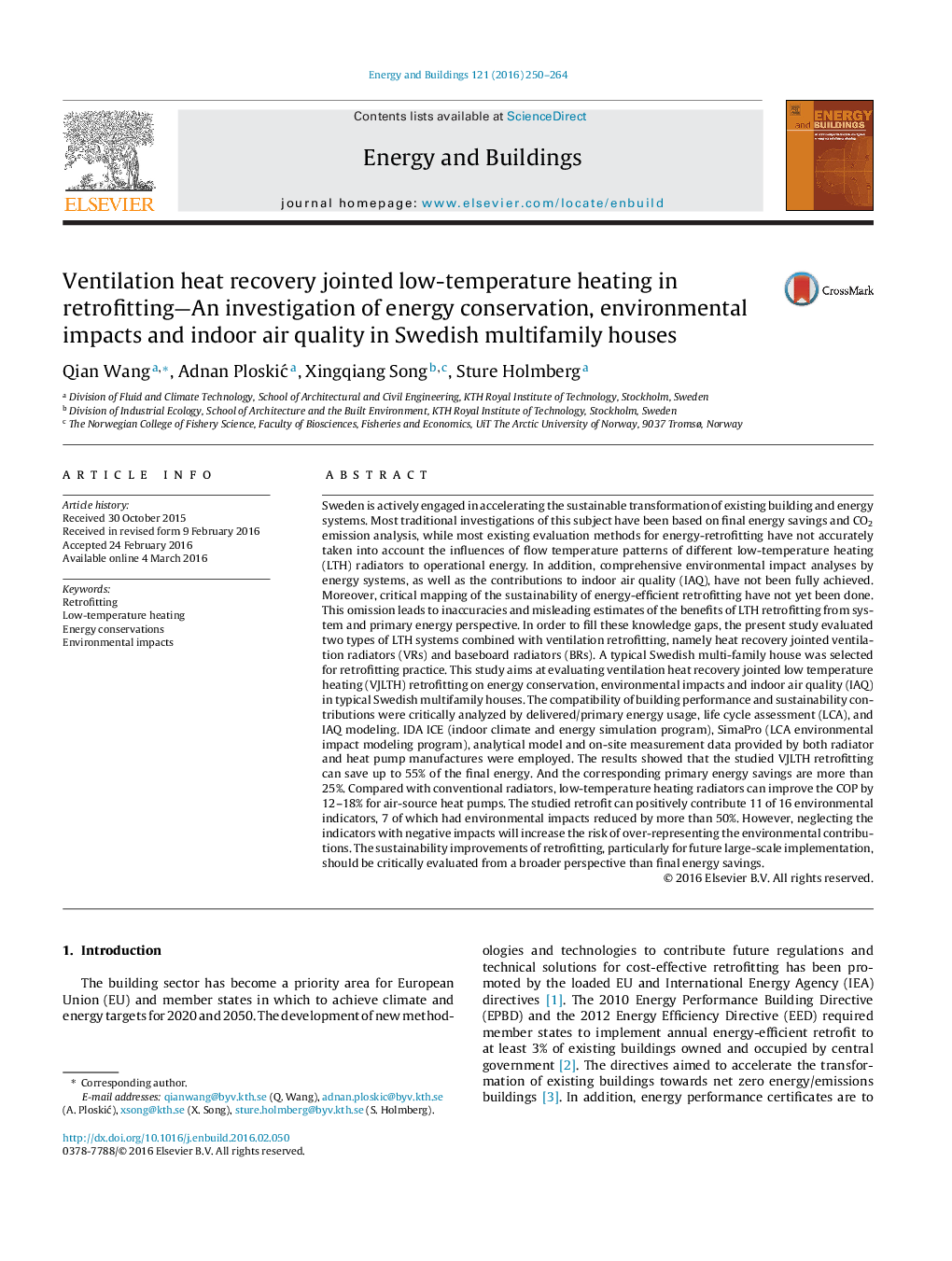| کد مقاله | کد نشریه | سال انتشار | مقاله انگلیسی | نسخه تمام متن |
|---|---|---|---|---|
| 262190 | 504014 | 2016 | 15 صفحه PDF | دانلود رایگان |
• Two types of low-temperature heating systems and the influences on heat pump performances were investigated.
• Energy conservations of combining low-temperature heating with ventilation retrofitting were evaluated in retrofitting practice.
• The contributions to environmental impact and indoor air quality were estimated.
Sweden is actively engaged in accelerating the sustainable transformation of existing building and energy systems. Most traditional investigations of this subject have been based on final energy savings and CO2 emission analysis, while most existing evaluation methods for energy-retrofitting have not accurately taken into account the influences of flow temperature patterns of different low-temperature heating (LTH) radiators to operational energy. In addition, comprehensive environmental impact analyses by energy systems, as well as the contributions to indoor air quality (IAQ), have not been fully achieved. Moreover, critical mapping of the sustainability of energy-efficient retrofitting have not yet been done. This omission leads to inaccuracies and misleading estimates of the benefits of LTH retrofitting from system and primary energy perspective. In order to fill these knowledge gaps, the present study evaluated two types of LTH systems combined with ventilation retrofitting, namely heat recovery jointed ventilation radiators (VRs) and baseboard radiators (BRs). A typical Swedish multi-family house was selected for retrofitting practice. This study aims at evaluating ventilation heat recovery jointed low temperature heating (VJLTH) retrofitting on energy conservation, environmental impacts and indoor air quality (IAQ) in typical Swedish multifamily houses. The compatibility of building performance and sustainability contributions were critically analyzed by delivered/primary energy usage, life cycle assessment (LCA), and IAQ modeling. IDA ICE (indoor climate and energy simulation program), SimaPro (LCA environmental impact modeling program), analytical model and on-site measurement data provided by both radiator and heat pump manufactures were employed. The results showed that the studied VJLTH retrofitting can save up to 55% of the final energy. And the corresponding primary energy savings are more than 25%. Compared with conventional radiators, low-temperature heating radiators can improve the COP by 12–18% for air-source heat pumps. The studied retrofit can positively contribute 11 of 16 environmental indicators, 7 of which had environmental impacts reduced by more than 50%. However, neglecting the indicators with negative impacts will increase the risk of over-representing the environmental contributions. The sustainability improvements of retrofitting, particularly for future large-scale implementation, should be critically evaluated from a broader perspective than final energy savings.
Journal: Energy and Buildings - Volume 121, 1 June 2016, Pages 250–264
